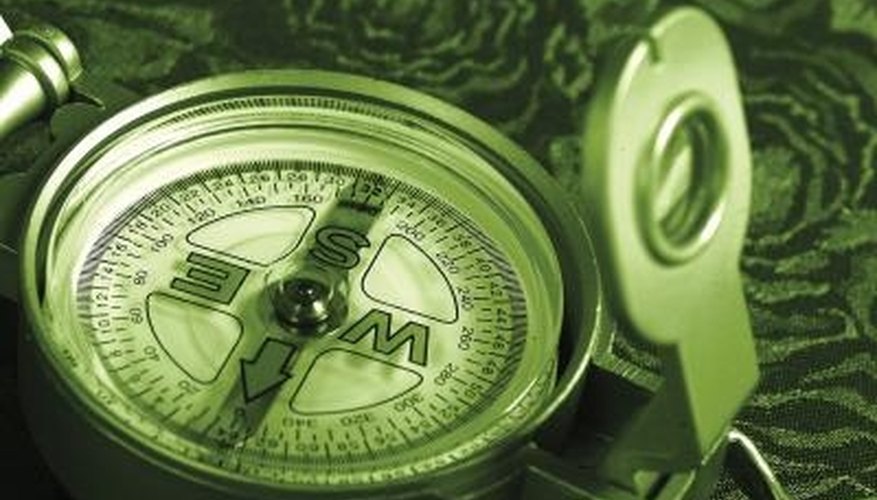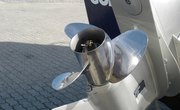
The magnetic compass has been used as a navigation tool since at least the 1st century AD. Although we associate the compass with finding our way to a location, it is not uncommon to want to retrace your steps. The exact opposite to the direct bearing followed to go somewhere new is called the back bearing. This is the bearing you'd take from your destination to your current position.
Step 1
Subtract 180 from the compass bearing to your destination if the bearing is greater than or equal to 180 degrees. The result is the back bearing. For example, if the bearing to your destination is 200 degrees, the back bearing is 20 degrees -- 200 - 180 = 20.
Step 2
Add 180 degrees to the compass bearing to your destination if the bearing is less than 180 degrees. The result is the back bearing. For example, if the bearing to your destination is 50 degrees, the back bearing is 230 degrees -- 50 + 180 = 230.
Step 3
Check the accuracy of your calculations by reversing them. For example, if you added 180, now subtract it from the back bearing. If the result is the original bearing, then your calculations were good and the back bearing is correct.
References
- National Wildfire Coordinating Group: Basic Land Navigation: Glossary
- "The Backpacker's Field Manual"; Rick Curtis; 1998
- BBC: Tutor’s Toolkit: Application of Number
- Climbing: Tech Tips
Writer Bio
David Robinson has written professionally since 2000. He is a Fellow of the Royal Geographical Society and the Royal Meteorological Society. He has written for the "Telegraph" and "Guardian" newspapers in the U.K., government publications, websites, magazines and school textbooks. He holds an honors Bachelor of Arts in geography and education and a teaching certificate from Durham University, England.



